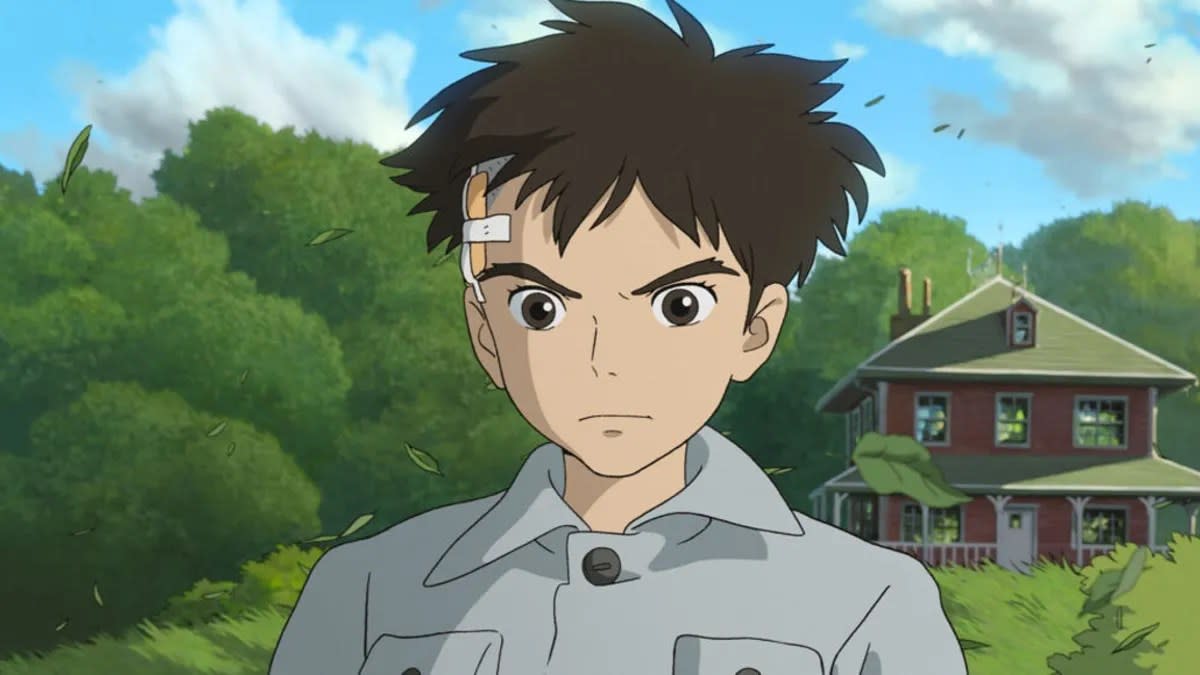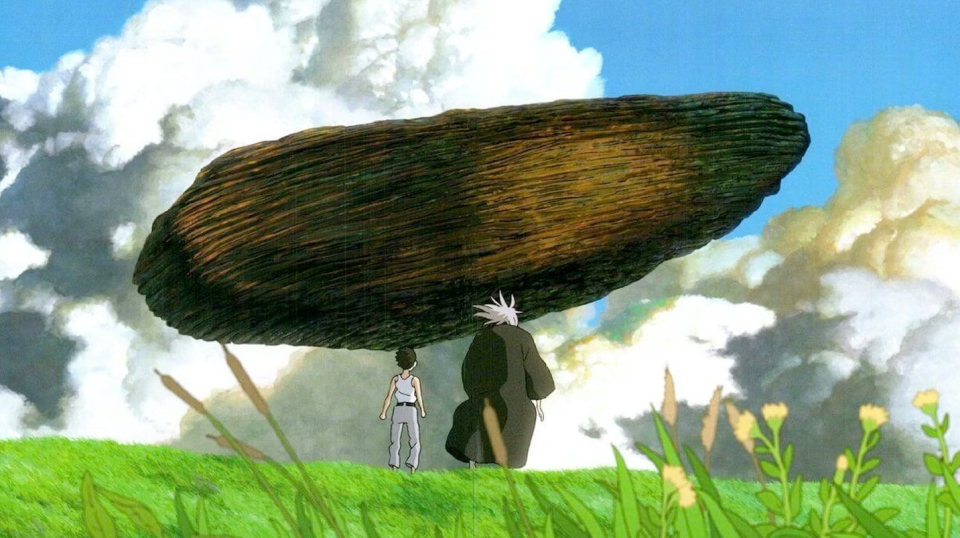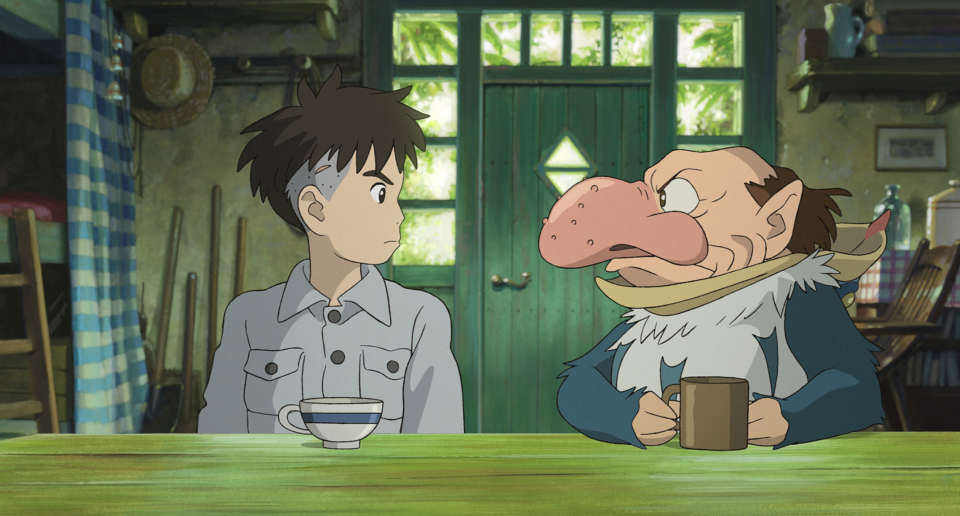‘Neon Genesis Evangelion’ Animator Became Miyazaki’s Secret Weapon on ‘Boy and the Heron’

- Oops!Something went wrong.Please try again later.
After Hayao Miyazaki took three years to finish the initial storyboard for “The Boy and the Heron” (GKids, now in theaters), it became obvious that he needed help. With diminished stamina and failing eyesight, the legendary anime auteur was no longer able to control everything. So he invited Takeshi Honda (“Neon Genesis Evangelion”), the supervising animator on his hybrid CG/2D short “Boro the Caterpillar,” to join his upcoming feature.
Honda was flattered and told Miyazaki that he would think about it because he was already committed to “Evangelion: 3.0+1.0 Thrice Upon a Time,” the franchise film finale. “But at that time, Miyazaki san said, ‘I don’t have time — there is no one in the Miyazaki family who is over 80 years old.’ I thought it was a big deal,” Honda told IndieWire over Zoom through an interpreter.
More from IndieWire
Lena Waithe, Danny Pudi, Debra Granik, and More Among Sundance 2024 Jury
Mickey Cottrell, Beloved and Veteran Indie Film Publicist, Dies at 79
Honda couldn’t refuse Miyazaki (now 82) and proceeded to spend the next seven years on a journey of a lifetime, supervising the animation of the director’s most personal film about his childhood during World War II. But “The Boy and the Heron” was a difficult adjustment for Honda, who, aside from his stint on the short, had previously only contributed a few shots to the director’s “The Wind Rises” and “Ponyo.” His style is more realistic than Miyazaki’s looser way of drawing, which meant that he had to adapt to the director’s vision for an entire film when drawing or re-drawing the work of the animators.
Fortunately, the director relinquished enough control on “The Boy and the Heron” for Honda and other animators to contribute their own individual styles when called for, especially in the second half, when the film becomes lighter and more fantastical. That’s where 11-year-old protagonist Mahito — Miyazaki’s alter ego — is led by the heron into an alternate reality shared by the living and the dead, dominated by giant parakeets and pelicans. This allowed Honda to model his work after real birds, despite their cartoony style.

“So the initial work on this project with Miyazaki san began like this,” Honda said. “I would submit to him what I thought the keyframes should be, sketches and whatnot. And then Miyazaki san would come back to me, kind of retracing the keyframes, saying, ‘No, the outline of the frame of the face should be more like this, or the eyes should be more like this, or the nose should be more like this. So there was a lot of that going back and forth for the first one or two years, and then he kind of left me to my own devices after that.”
But when it came to faces, Miyazaki mainly strayed from his usual anime style of large eyes and small noses, a realism that Honda was more accustomed to. Here the master requested large noses for Mahito, his father Shoichi, his stepmother Natsuko, and his mother Himi. These are characters that Miyazaki wanted to portray with sophistication and nuance in both design and performance, particularly the adult women.
“I had to adjust to reduce the number of facial expressions to express the nuance of the content, but Miyazaki san’s instructions were also there,” added Honda. “There was a request to make it look like it was drawn, especially Natsuko san. But if you don’t really go through the nose of an adult woman, you end up becoming a girl. So I was conscious of being an adult woman.”
Even so, Honda made significant contributions to key scenes involving Natsuko while displaying tremendous versatility throughout, according to acclaimed animator Toshiyuki Inoue (“Akira,” “Ghost in the Shell,” “Millennium Actress”). He worked on two crucial scenes in the second half, despite having a rough time with Miyazaki early in his career on “Kiki’s Delivery Service.”

In return, Honda was very complimentary of Inoue’s contribution to the scene where Mahito and Himo elude a legion of parakeets on a precipice between the two worlds. “In the tunnel, he and Himi find a door together and when they open it, they see the real world,” he said. “And so Shoichi comes out. From there, a lot of [parakeets] come out in the real world. It’s very impressive, and there’s a huge amount of poop, and it’s a scene that can only be done by Inoue san.”
By contrast, Honda credited the work of famed animator Shinya Ohira (“The Wind Rises,” “Howl’s Moving Castle,” “Spirited Away”) for the horrifying opening sequence where Mahito rushes through a chaotic Tokyo street engulfed in flames to reach his mother in the hospital. A master of exaggerated motion, this kicks the film off with the fire warping everything from the young boy’s nightmarish perspective, thanks to layers of hand-drawn animation and motion blur.
“What I do as a supervising animator is the artists give me the key frames, and I usually have to make little corrections,” said Honda. “But with Ohira san, he drew so many that it’s too much for me to even make corrections. He has his own style that sometimes doesn’t match with Miyazaki san’s style, but his work has so much power that we kind of had to go along with it.”
Then there’s Akihiko Yamashita (“The Wind Rises,” “Howl’s Moving Castle,” “Spirited Away”), who was brilliant at animating mobs and scenes of destruction. “As for Yamashita san, in every scene, whether it’s the frog scene, or the pelican scene, or the sea wave scene, or, in the end, where the tower collapses, and the chaos around it, he did a lot of things for me,” Honda added. “I can’t thank [his contributions] enough.”
Best of IndieWire
Quentin Tarantino's Favorite Movies: 60 Films the Director Wants You to See
Where to Watch This Week's New Movies, Including 'The Iron Claw' and 'All of Us Strangers'
2023 Movies Shot on Film: From 'Oppenheimer' to 'Killers of the Flower Moon' and 'Maestro'
Sign up for Indiewire's Newsletter. For the latest news, follow us on Facebook, Twitter, and Instagram.

